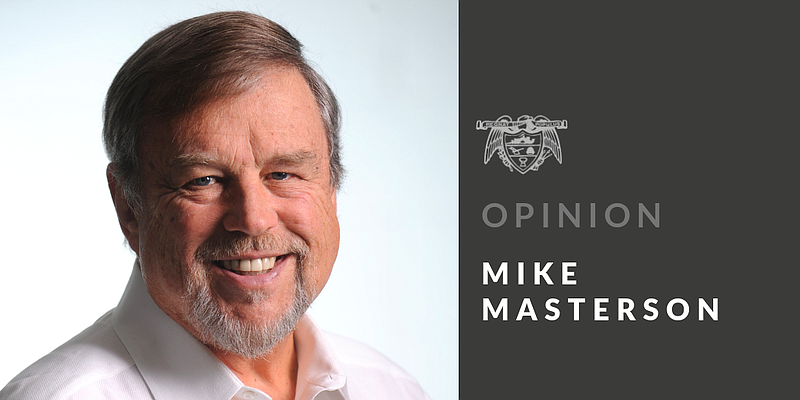Nearly 50 years have passed since I last walked the streets of downtown Hot Springs. The city has spread out in every direction over those decades, as I discovered the other day after spending two nights at the remodeled Waters Hotel across Central Avenue from famed Bathhouse Row.
When I left the city in 1980, the population of surrounding Garland County was about 65,000, compared with about 100,000 today, as the city has crept toward the county line in every direction.
Between 1973 and 1980, when I was editor of the daily Sentinel-Record, the popular auction houses were bustling, as was the famed IQ Zoo, since closed. The Sawmill Depot, a favorite watering hole and restaurant, was the downtown's go-to social spot. Back then the town's biggest draws were those world-famous thermal bath houses along with the annual thoroughbred races.
Today, only the Quapaw and Buckstaff baths remain open, while Oaklawn has added an enormous thriving casino.
Life is continual change, and the result of acknowledging it is to appreciate the evolution. And did I ever reflect as we strolled the sidewalk from the Arlington Hotel, past historic Lauray's Jewelry and beyond the Malco.
I recalled many greasy breakfasts at the former Martin's Recreation and Cafe where I'd regularly claim one of 20 or so worn stools at a counter that faced the sizzling grill and watch a heavy-set cook in a smeared apron prepare breakfast. Then I'd head for the register and tell the cashier what I'd eaten. Martin's didn't use tickets, trusting one's word.
Just across the street was the former Fox Hotel with its bare rooms where in the mid-1970s many widowers and other lonesome elderly men existed after venturing to the Spa City to spend days on park benches. I recalled staying three nights to document the sad conditions.
The city now is more in tune with the times. The many new shops, eateries, rides and attractions struck me as more Branson-like with a hint of Eureka Springs than the staid city I'd known a half-century ago.
Long gone was the mural proclaiming, "Hot Springs Has All The Fun" painted on a brick wall I'd once photographed as a backdrop to an elderly man feeding pigeons from his wheelchair. Gone was the Oklahoma Tire and Supply Store where I purchased Christmas presents. There were so many changes.
What was new was a nearby small urban park with a bronze marker honoring the late Kenneth Adair, an alderman and elderly activist for the town's Black population who died in 1983. During my time there, Adair and I came to respect and trust each other. It was he who once pointed out that some streets in the city's Black section remained unpaved, regularly sending billowing clouds of dust from passing vehicles into homes.
The resulting stories embarrassed the city into finally paving them. And in 1978 when I was continually led to evidence that proved the innocence of an indicted Black brickmason named Shelby Barron, Adair called a press conference specifically to say he'd "never witnessed a white man put forth such an effort on behalf of a Black man." While I was humbled by that statement, all I'd done was pick up a thread of truth and follow it for weeks to its end.
After all, wasn't that what journalists were expected to do regardless of race, religion, gender or politics? I believed so. Yet another fond memory.
Jeanetta and I climbed the stairs onto the magnificent Promenade brick walkway a block from the newspaper and behind Bathhouse Row. There we strolled with other visitors until it ended at the grand old Arlington Hotel.
My mind traveled to the years when 13 journalists in the newsroom bought into awakening from what had been an unrewarding slumber (where wire-service stories filled most of the paper). They began telling readers what was actually happening in town.
The marching instructions had been simple: Let's begin reporting the facts and relevant news rather than simple process stories, regardless of whose doorstep the truth crosses. Many exposés were published in the ensuing seven years.
We stopped by the paper and visited with editor Mark Gregory, where we reminisced about the ways the paper has changed along with the town since 1980. As we shared experiences, my seven fulfilling years in Gregory's role seemed more as if I'd dreamed them.
I also peeked into Walter Hussman Jr.'s former corner office and recalled that he and his father always supported every effort to practice First Amendment journalism in their newspaper. I also remembered the night he'd summoned me to write the news release about his purchase of the Arkansas Democrat. It proved to be the first of many wise business decisions Walter has made over decades to come.
Pulling out of town for the two-plus-hour drive back to Harrison, I wasn't sure I'd ever return without a reason. And I realized how beneficial it had been to my spirit to reconnect--even briefly--with what became some of the most pivotal and influential years of my early career.
Mike Masterson is a longtime Arkansas journalist, was editor of three Arkansas dailies and headed the master's journalism program at Ohio State University. Email him at mmasterson@arkansasonline.com.
